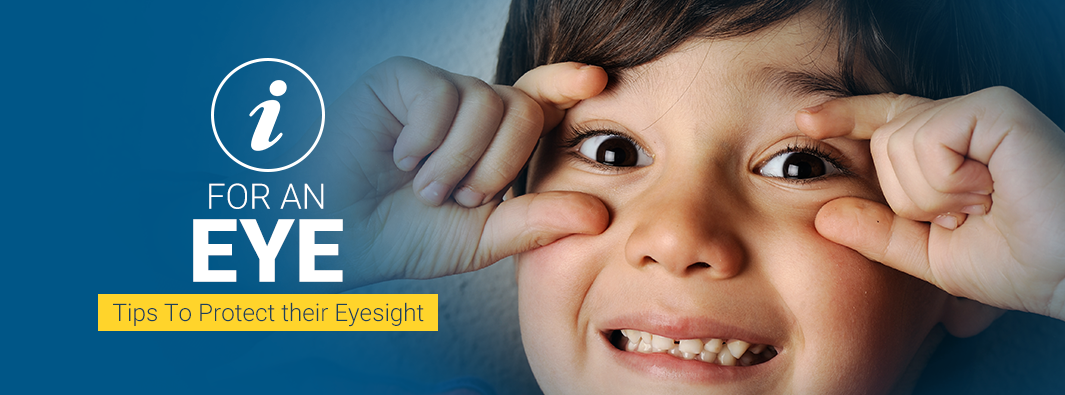Good eyesight is crucial in making sure a child develops to their full potential both at school and socially. It's especially important to look after children's eyes as they are still developing throughout their early childhood. So, if problems are treated early, it can make a lasting difference.
Common Eye Problems
There are several eye conditions that can affect kids. Most are detected by a vision screening using an Acuity chart during the preschool years.
- Amblyopia otherwise known as lazy eye, is a poor vision in an eye that may appear to be normal. Two common causes are crossed eyes and a difference in the refractive error between the two eyes. If untreated, amblyopia can cause irreversible visual loss in the affected eye. (By then, the brain's "programming" will ignore signals from that eye) Amblyopia is best treated as early as possible, ideally before a child is 8 years old.
- Strabismus is a misalignment of the eyes; they may turn in, out, up, or down. If the same eye is chronically misaligned, amblyopia may also develop in that eye. With early detection, vision can be restored by patching the properly aligned eye, which forces the misaligned one to work. Surgery or specially designed glasses also may help the eyes to align.
- Refractive errors mean that the shape of the eye doesn't refract (bend) light properly, so images appear blurred. Refractive errors can also cause amblyopia. Nearsightedness is the most common refractive error in school-age children; others include farsightedness and astigmatism:
- Near-sightedness is poor distance vision (also called myopia), which is usually treated with glasses or contact lenses.
- Far-sightedness (also called hyperopia), which is usually treated with glasses or contact lenses.
- Astigmatism is imperfect curvature of the front surface of the eye, which is usually treated with glasses if it causes blurred vision or discomfort. Contact lenses may be used in some cases now a days.
Warning Signs Of Vision Problems In Kids
Refractive errors are the most common cause of vision problems among school-going children. Parents, as well as teachers should be aware of these 10 signs that affect a child's vision:
- Consistently sitting too close to the TV or holding a book too close
- Losing his place while reading or using a finger to guide his eyes when reading
- Squinting or tilting the head to see better
- Frequent eye rubbing
- Sensitivity to light and/or excessive tearing
- Closing one eye to read, watch TV or to see better
- Avoiding activities which require near vision, such as reading or homework, or distance vision, such as participating in sports or other recreational activities
- Complaining of headaches or tired eyes
- Avoiding using a computer, because it "hurts his eyes"
- Receiving lower grades than usual
Sometimes there can be no symptoms too.
How to protect their eyesight
- Eat right both during pregnancy and after. Your baby will be healthier and you will set a good example
- Provide nutritious meals with fruits, vegetables, nuts, and up to 12 ounces a week of fish. These foods contain key antioxidants and nutrients such as vitamin C, vitamin E, zinc, omega-3 fatty acids, and lutein, which are linked to eye health
- Provide your child with age-appropriate toys that are free from sharp edges to prevent injury to the eyes
- Give your child toys that encourage visual development
- Watch your baby for signs where the eyes are crossed or turned out
- Look at your baby for any haziness or clouding in the pupil
- Provide sun protection when outdoors by means of shelter or UV coated lenses, especially if your child's eyes are light in colour
- Be an example to your child by wearing the proper protective athletic gear when playing sports, especially while swimming, playing cricket, etc.
- Have your child's eyes examined regularly, particularly during infancy and childhood
When to get your child's eyes checked
- Children should have an eye exam by no later than 6 months old, then again by age 3, and just before starting school
- School-going children need an exam every two years if they have no visual problems
- But if your child requires eyeglasses or contact lenses, schedule visits every 12 months

